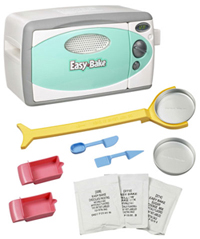Incandescent bulbs have their places. Light sockets shouldn’t be among them.
The owner of a B&B my wife and I stayed in recently mentioned her reluctance to swap out her existing fleet of incandescent bulbs to put in high-efficiency compact fluorescents (CFLs) or the newer LED ones. She couldn’t bear to take out “perfectly good light bulbs”—ones that hadn’t yet burned out.
My take? If something is costing you four times as much as you could be paying, it’s far from “perfectly good.” Perfectly good riddance is more like it.

Annual lighting costs by technology. (Spending $48 is better than spending $190.) From Cooler Smarter (www.coolersmarter.org), adapted from 2011 EIA data.
Fortunately, the market is swiftly moving in the right direction. As befits an end-use that accounts for 10-15 percent of household electricity use, starting this January, light bulbs—just like most other appliances—began having to meet national efficiency standards.
High-efficiency options now cover just about any lighting your heart might desire for your home. And all the options together can help you slash your lighting costs 75 percent or more. On average, that means dropping from spending $190 per year to $48 or even less.
Incandescent afterlife
Still, I can understand the reluctance to get rid of them altogether. I’ll admit, even though I’ve done a thorough job of getting them out of the sockets, I can’t bring myself to toss them out. I have an impressive stockpile in my basement that represents a Smithsonian-worthy cross section of late-20th century lighting technology.
So, what’s a feller to do with old bulbs?
Well, never fear: it turns out there are myriad possibilities that keep them out of harm’s way. Here are just a few:
- Easy-Bake Ovens — Waste heat is only “waste” if we don’t use it, right?
 Stick an incandescent bulb in an overhead socket and 90 percent of the energy rains down as heat, wanted or not. Stick it instead in a sealed box with a Betty Crocker cake dough blob, and voila! New Easy-Bake Ovens have ditched the light bulb (given that standard 100-watt incandescent bulbs fall far short of the new standards). But the old versions still need the bulb to continue to bring joy and tasty treats and Home Ec skill development to oodles of hungry children. Just try doing all that with an LED.
Stick an incandescent bulb in an overhead socket and 90 percent of the energy rains down as heat, wanted or not. Stick it instead in a sealed box with a Betty Crocker cake dough blob, and voila! New Easy-Bake Ovens have ditched the light bulb (given that standard 100-watt incandescent bulbs fall far short of the new standards). But the old versions still need the bulb to continue to bring joy and tasty treats and Home Ec skill development to oodles of hungry children. Just try doing all that with an LED. - Sock darning — Those who can’t throw out bulbs that have outlived their usefulness probably have just as hard a time getting rid of socks with holes in them. (I count myself among them.) Well, it just so happens that, when inserted in a sock, the delicate curves of Edison’s invention are a fine stand-in for a human heel. They make a nice backboard for darning those socks and restoring them to some semblance of their pre-hole glory. Using the curly-cues of a CFL instead would leave you with a finished product more suited to a chicken foot than to your own.
- Flower arranging — Who says the bulb has to stay intact to be useful? If you have safety glasses and are handy with needle-nose pliers, just pull out the innards, dress it up a bit, and this lovely bud vase could be yours in no time at all. And don’t keep these little gems to yourself. Your friends will be dazzled by your skill and impressed by your genius in realizing that lighting a room with 23 watts is a much better deal than consuming 100.
And there are so many more possibilities.
Ready to party
Meanwhile, my pile of rejected bulbs has just grown a little taller. Something we recently acquired came with a couple of the little cone-shaped halogen lamps. Replacements we just found upgraded us in one fell swoop from a pair of 50-watters to two 4-watt LED ones that are doing a fine job. Ninety-two percent savings? A body could get used to that.
What comes next? Well, there’s no chance of any of the bulbs weaseling their way back into any of our lights; the savings are just too sweet to turn our backs on. But if it falls to my family to host the next neighborhood Easy-Bake sock-darning budvase-making party, you can bet we’ll be ready.
